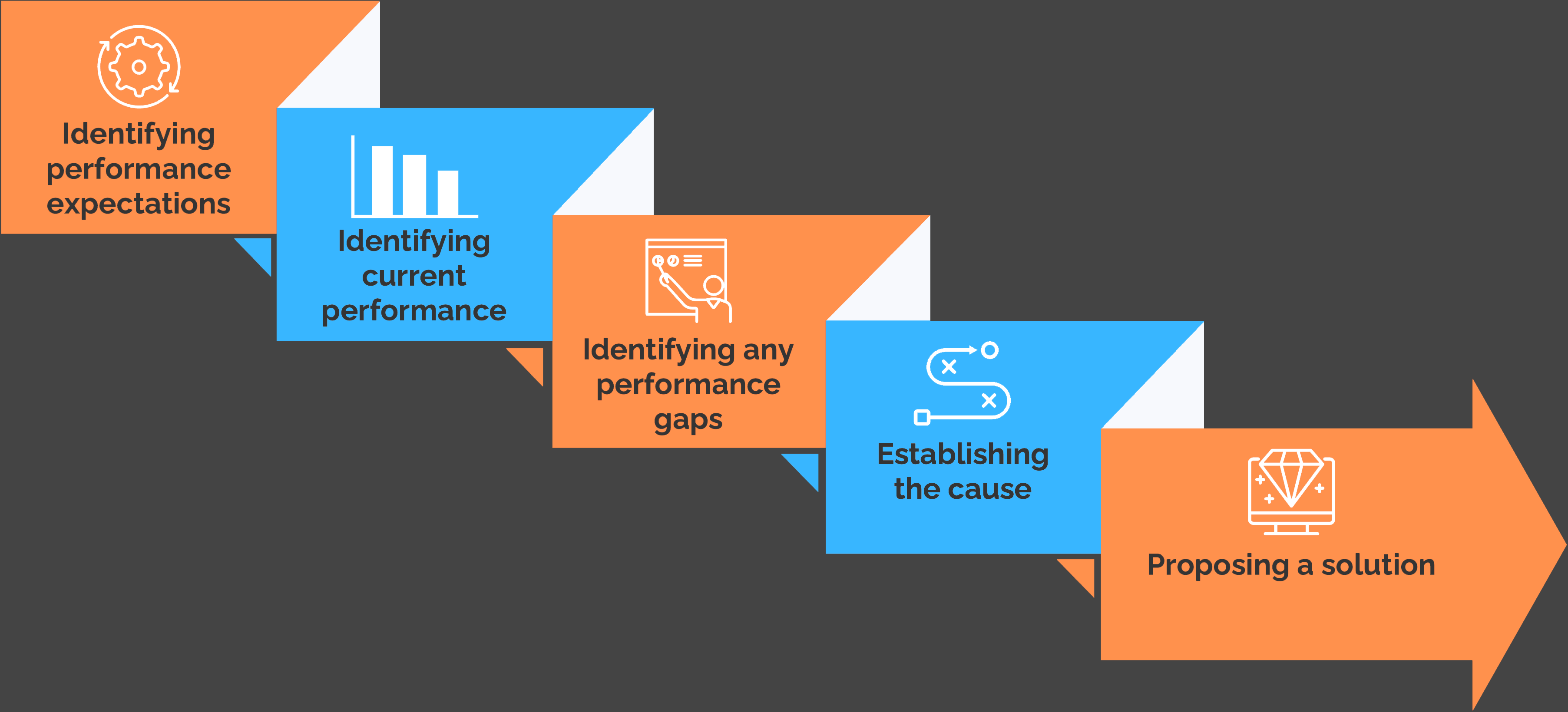Working together
Getting things done the right way
Finding out what people need
All learning and development resource creation needs a systematic approach of identifying which kind of training people require, how any necessary training will be designed, and how it will be implemented.
In instructional e-learning, I’ll use a training needs analysis to identify the new skills, knowledge, and attitudes needed to improve performance. You may well have conducted your own analysis already; often, this will act as a starting point for designing your staff training.
A training needs analysis can be anything from a simple exercise involving a small number of people (individual or team analysis) all the way up to a big, company wide exercise (organisational analysis). If you want a deep dive into the subject, I’ve designed a training needs analysis course available here.
Gathering the necessary knowledge and expertise: who's involved?
Clients and their subject matter experts (SMEs) are the people I rely on for specialist information. It might be business law, physical exercise, software explainers, financial processes, technology innovation, or any other sector. Whatever the action, task, or skill, you and your subject matter experts are the people closest to the issue.
My role is to gather, organise, and deliver content from the subject matter expert to your learners in a way that delivers the required performance outcomes.
But who is a subject matter expert? Well, an SME is anyone who can provide knowledge and expertise; share existing content and materials; and help in outlining the criteria for a successful e-learning course.
Topics to explore with a subject matter expert include: [+]
[+]

Communicating the knowledge and expertise to learners: what is adult learning theory?
Learners and how they learn is a key concern for any trainer or instructional designer. I build into any e-learning solution the four key principles of adult learning theory. It’s nothing fancy; there’s no hidden knowledge I’m unlocking here. Building in adult learning theory to any instructional training simply means: Acknowledging that adults want to be involved in how training is planned and delivered. Adults like to be in control of what, when, and how they learn.
Acknowledging that adults want to be involved in how training is planned and delivered. Adults like to be in control of what, when, and how they learn.
 Including relevant previous experiences into the learning process. This adds context to any learning.
Including relevant previous experiences into the learning process. This adds context to any learning.
 Building problem solving and reasoning into e-learning. Memorising facts and data isn’t the best way for many adults to learn. Problem solving and reasoning are often the best techniques to maximise the retention of new information.
Building problem solving and reasoning into e-learning. Memorising facts and data isn’t the best way for many adults to learn. Problem solving and reasoning are often the best techniques to maximise the retention of new information.
 Answering the question, “How can I use this information now?” What adults learn needs to be applicable and of immediate use.
Answering the question, “How can I use this information now?” What adults learn needs to be applicable and of immediate use.
That's how I work with people. As an instructional designer, I also work with things. Things include: authoring software such as Articulate Storyline and Adobe Captivate; existing resources from clients and subject matter experts; words and images to form new content, etc. Go to how I work with things to find out more.
Working together
Toolkit
Methods and processes
- Project management using Kanban.
- Creation of over 750 training needs analysis and gap analysis documents
- Learner interaction storyboarding, design and development with scoping informed by analysis results.
- Course content, scheme of work, and lesson plan development embedding VARK (Visual, Aural, Read, and Kinaesthetic) learning styles for both educational and corporate settings.
- Creation of learner evaluation surveys.
- Adherence to ADDIE instructional design principles.
Tools and technology
- Articulate Storyline and Rise. Familiar with the production of web and SCORM packages).
- Adobe Captivate for the creation of both responsive and non-responsive projects for all devices.
- Camtasia for explainer video creation.
- Adobe Creative Cloud including After Effects and Premier Pro for video production.
- Microsoft Office 365 including SharePoint and advanced PowerPoint.
- Database and learning management system (Moodle) applications.
- HTML and CSS for website content creation and editing.